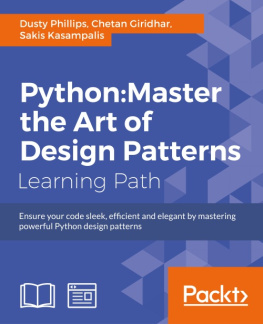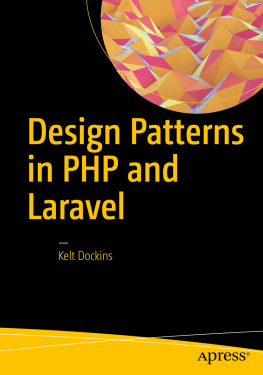Go Design Patterns
Copyright 2017 Packt Publishing
All rights reserved. No part of this book may be reproduced, stored in a retrieval system, or transmitted in any form or by any means, without the prior written permission of the publisher, except in the case of brief quotations embedded in critical articles or reviews.
Every effort has been made in the preparation of this book to ensure the accuracy of the information presented. However, the information contained in this book is sold without warranty, either express or implied. Neither the author, nor Packt Publishing, and its dealers and distributors will be held liable for any damages caused or alleged to be caused directly or indirectly by this book.
Packt Publishing has endeavored to provide trademark information about all of the companies and products mentioned in this book by the appropriate use of capitals. However, Packt Publishing cannot guarantee the accuracy of this information.
First published: February 2017
Production reference: 1170217
Published by Packt Publishing Ltd.
Livery Place
35 Livery Street
Birmingham
B3 2PB, UK.
ISBN 978-1-78646-620-4
www.packtpub.com
Credits
Author Mario Castro Contreras | Copy Editor Safis Editing |
Reviewer Shiju Varghese | Project Coordinator Izzat Contractor |
Commissioning Editor Kunal Parikh | Proofreader Safis Editing |
Acquisition Editor Chaitanya Nair | Indexer Mariammal Chettiyar |
Content Development Editor Zeeyan Pinheiro | Graphics Abhinash Sahu |
Technical Editor Pavan Ramchandani | Production Coordinator Deepika Naik |
About the Author
Mario Castro Contreras is a software engineer who has specialized in distributed systems and big data solutions. He works as a site reliability engineer, and now he is focused on containerized solutions and apps using most of Google Cloud suite; especially, Kubernetes. He has a wide experience in systems and solutions integration, and he has written many scalable and reliable 12 factor apps using Go and Docker. He has designed Big Data architectures for financial services and media, and he has written data processing pipelines using event-driven architectures written purely in Go. He is also very active in the open source community, and you can find him on his GitHub account with the username sayden . In the past, he has also written mobile applications and backends in Java.
Mario is passionate about programming languages, and he found the best balance between fun and productivity in Go; however, recently, he enjoys writing in Rust and embedded systems in C. He is also passionate about road cycling and winter sports.
I'd like to express my deep gratitude to my parents for supporting me in my journey through computers since I was 8. To Urszula, Tyrion and Tesla for their daily support and for being with me in the long nights writing this book.
I'd like to thank Chaitanya, for her guidance at the beginning of the book, Zeeyan, for his patience and help on every chapter, and Pavan, for the help and explanations. But also to all the reviewers, especially to Shiju, and the entire team at Packt that made this book possible.
About the Reviewer
Shiju Varghese is a solutions architect focused on building highly scalable cloud native applications with a special interest in APIs, microservices, containerized architectures, and distributed systems. He currently specializes in Go, Google Cloud, and container technologies. He is an early adopter of the Go programming language and provides consultation and training for building backend systems and microservices with Go ecosystem. He has been a mentor to various start-ups and enterprises for the technology transformation to Go. He has been a speaker at numerous technology conferences, including GopherCon India.
Shiju has authored two books on Go, titled Web Development with Go and Go Recipes , both published by Apress.
www.PacktPub.com
For support files and downloads related to your book, please visit www.PacktPub.com.
Did you know that Packt offers eBook versions of every book published, with PDF and ePub files available? You can upgrade to the eBook version at www.PacktPub.com and as a print book customer, you are entitled to a discount on the eBook copy. Get in touch with us at service@packtpub.comfor more details.
At www.PacktPub.com, you can also read a collection of free technical articles, sign up for a range of free newsletters and receive exclusive discounts and offers on Packt books and eBooks.
https://www.packtpub.com/mapt
Get the most in-demand software skills with Mapt. Mapt gives you full access to all Packt books and video courses, as well as industry-leading tools to help you plan your personal development and advance your career.
Why subscribe?
- Fully searchable across every book published by Packt
- Copy and paste, print, and bookmark content
- On demand and accessible via a web browser
Customer Feedback
Thanks for purchasing this Packt book. At Packt, quality is at the heart of our editorial process. To help us improve, please leave us an honest review on this book's Amazon page at https://www.amazon.com/dp/1786466201.
If you'd like to join our team of regular reviewers, you can email us at customerreviews@packtpub.com. We award our regular reviewers with free eBooks and videos in exchange for their valuable feedback. Help us be relentless in improving our products!
Preface
Welcome to the book Go Design Patterns ! With this book, you'll learn basic and advanced techniques and patterns with the Go language. Don't worry if you have never written Go code before; this book will gradually introduce you to the various concepts in Go programming. At the same time, experts will find many tips and tricks on the language, so I encourage you to not miss any chapter. If you already know the classic design patterns, you'll find this book very handy, not only as a reference book but also as a way to learn idiomatic Go approaches to solve common problems that you may already know.
The book is divided in three sections:
- Introduction to the Go language: This is the first part of the book, where you'll learn the basic syntax, the tools that comes with the binary distributions, basic testing, JSON parsing, and more. We leave concurrency for a later chapter to focus on the way that the syntax and the compiler work in a typical Go app.
- Classic design patterns in idiomatic Go: The second section presents the classic design patterns but as we will see, they are quite different, partly because of the lack of inheritance in Go, but also because we have different and more optimal ways to solve the same problems. A newcomer to the language will find the examples in this section very useful as a way to understand the roots of Go and the idiomatic ways in which you can solve problems using Go in the same manner as you would solve in languages such as Java or C++. Most examples are presented by using TDD and some of them even show examples within Go standard library that uses these patterns.

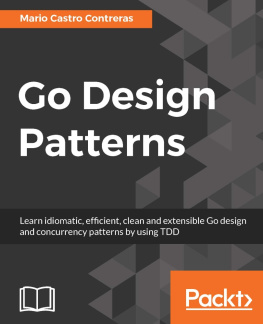

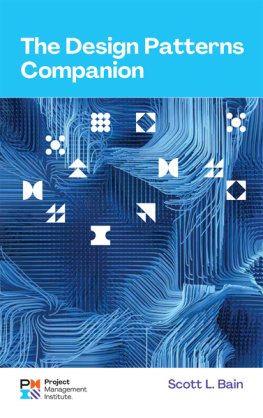
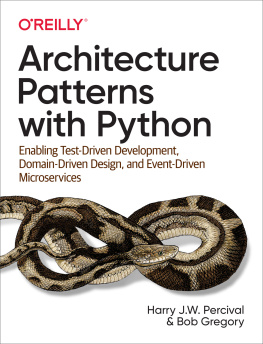
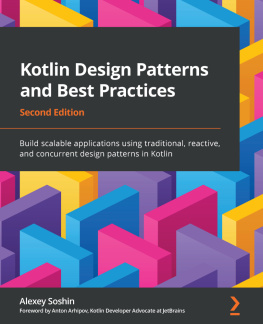
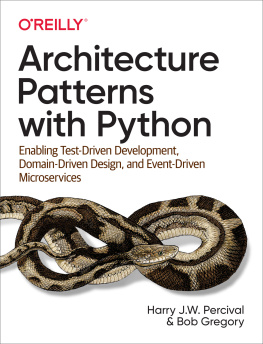
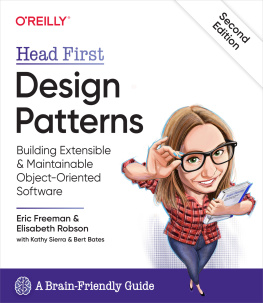
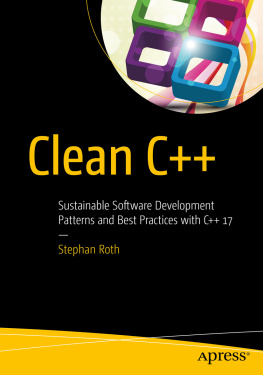

![Freeman - Pro design patterns in Swift: [learn how to apply classic design patterns to iOS app development using Swift]](/uploads/posts/book/201359/thumbs/freeman-pro-design-patterns-in-swift-learn-how.jpg)
